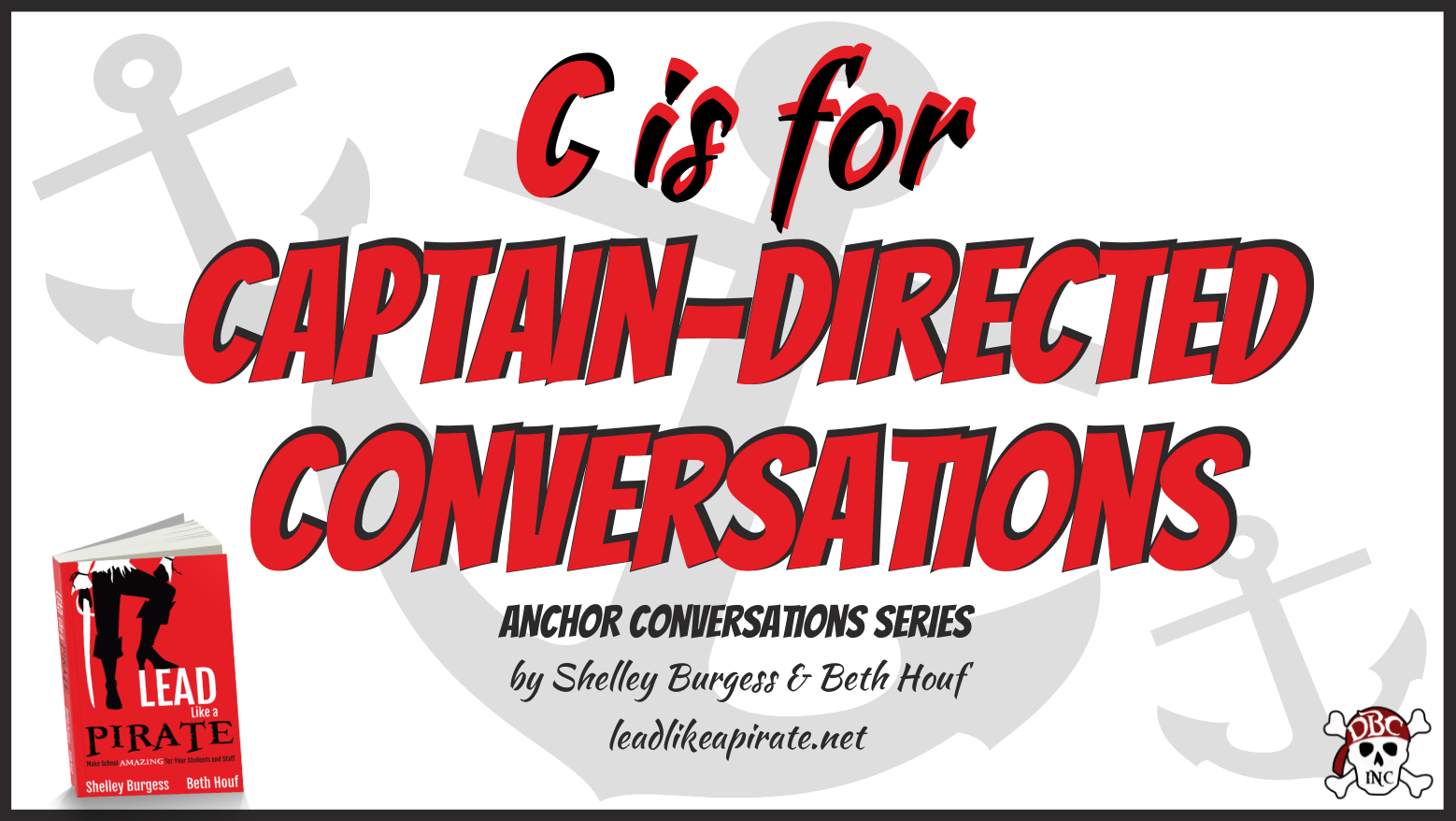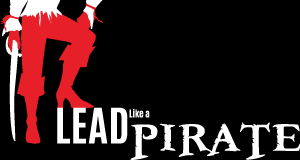
C is for Captain Directed Conversations
C is Also for Captain-Directed Conversations
While we love having collaborative conversations with people, sometimes the situation calls for a more captain-directed conversation. Captain-directed conversations are the ones you have when you realize the teacher really needs your help. They are struggling with something and just can’t get it right, or they are trying something and are missing a few steps that maybe they don’t understand and need clarification from you.
A good way to look at a captain-directed conversation is as an instructional conversation where you are teaching something to the other person.
Critical Components of a Captain-Directed Conversation
- Label and define the practice that was missing or that the teacher was struggling to execute. The better we are at labeling practices when we see them and then defining them, the more likely we are to all come to a common understanding of what the words and phrases mean in our school communities. Having a common language and understanding of practices can help us avoid misunderstandings and conflicts with our staff.
- Share examples of what the practice could/should look like. It’s important to give a couple of examples of what it could have looked like in the context of the lesson you just observed.
- Explain the impact on student learning. Offering the justification for that in terms of student-learning impact is important. If people are making changes, they want to see results.
- Check for understanding. This could be something as simple as asking, “So when you plan your lesson for tomorrow, what do you think you’ll do to check for student understanding?” and “How is that different from what you did today?” If they have a good understanding of the practice, tell them so! If they don’t, continue to teach and clarify.
- Schedule a follow-up visit to see the new practice in action. You entered into a captain-directed conversation because the teacher was struggling with something. Even after the conversation, don’t assume that they’ve got it down. We all need practice when we are doing something new, so make yourself available to be back in the classroom soon to observe the practice and offer more support.
- Say “Thank you!” In this instance, the thank-you we give is often a thank-you for wanting to learn and grow and to continuously get better at this complex task we call teaching. And it’s a thank you for trusting us enough to share a struggle.
Captain-Directed Conversation Challenge
What are instances that constitute a conversation that must be captain-directed? What is it about these instances that makes them a barrier to student learning?
Think back to a conversation you have had with a staff member that had to be captain-directed. What went well? What did not go so great? Look back at this section and identify one practice you will begin doing the next time you have to have a conversation that is directed by you.
-Shelley
ANCHOR Conversations Live Event
Have Questions for us during the #LeadLAP ANCHOR series? Want to dive deeper into ANCHOR at our LIVE event on April 30 9:30 am CST? Drop your questions and sign up HERE.
Lead Like a PIRATE
You'll learn where to find the treasure that's already in your classrooms and schools--and how to bring out the very best in your educators.
More info →





